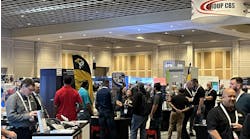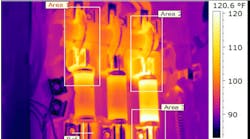Today’s oscilloscopes have far more functionality than their old cathode-ray tube (CRT) analog counterparts. At first glance, the proliferation of all of those knobs and buttons may seem overwhelming, but the on-screen menus and on-line documentation capabilities of today’s instruments enable you to display waveforms and measure/save inputs with ease.
Most makes and models currently available are similar in price and features. Although the terminology and layout of controls may differ from unit to unit, the basic methods for getting signals to display are quite similar.
This series of 10 oscilloscope demonstrations — beginning with the simplest and moving to the more difficult — is intended to give you an idea of what these amazing instruments are capable of doing in the new world of advanced electronics and to help increase your troubleshooting proficiency along the way.
Let’s begin with a simple DC hookup. To get started, plug a probe into one of the analog channel inputs, and press the power button. Like a computer, the instrument will take about a minute to boot up. An onscreen message states that “power-on self-test passed.” Push “menu off” to clear the screen. The instrument is now ready to use.
The Value of Hand-Held Oscilloscopes
The hand-held oscilloscope is a valuable asset for the advanced electrician or electronics technician. Its cost is a little more modest than a bench model with similar bandwidth, channel count, and features. However, most of the exercises in this article (including math and even the built-in spectrum analyzer) can be performed using a hand-held unit.
Moreover, the hazards discussed in this article in connection with touching an oscilloscope probe ground reference lead to a terminal that floats at a potential other than the premises electrical system ground level are not an issue for the hand-held, battery-operated oscilloscope. That is because all channel ground reference leads are isolated from system ground and from each other.


